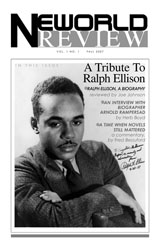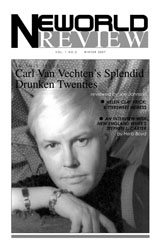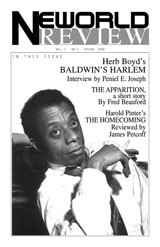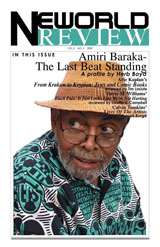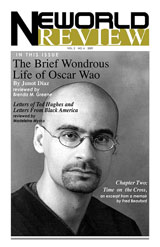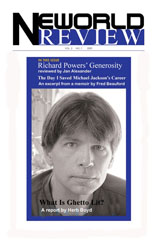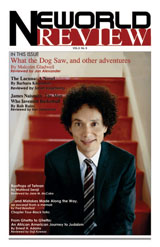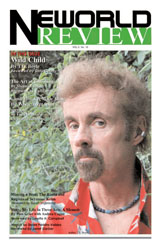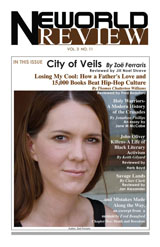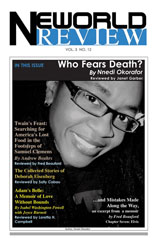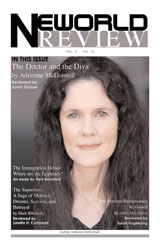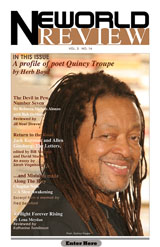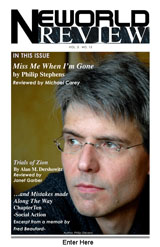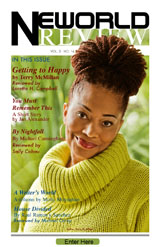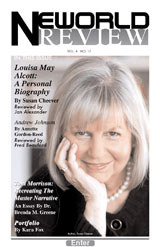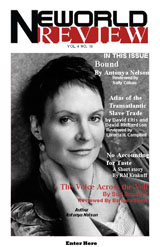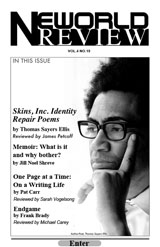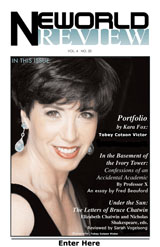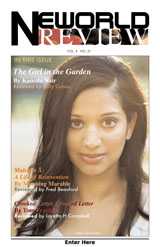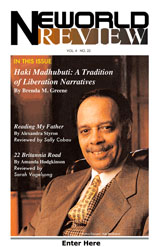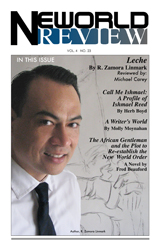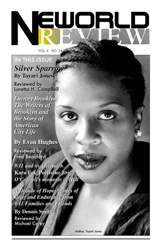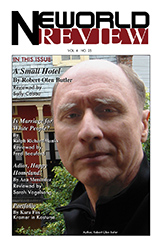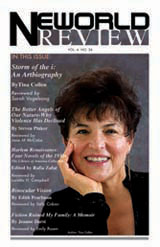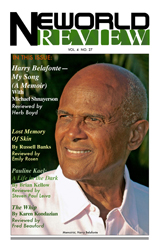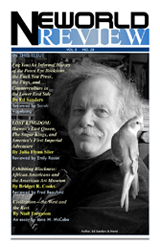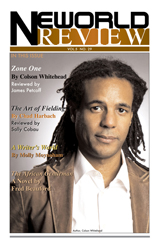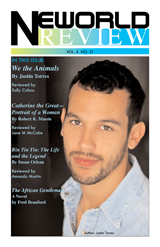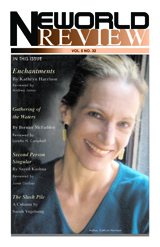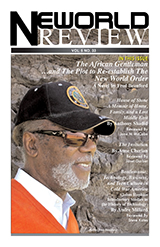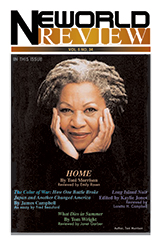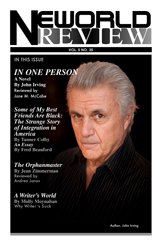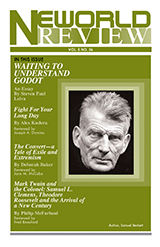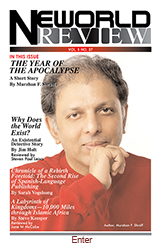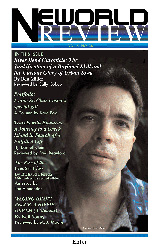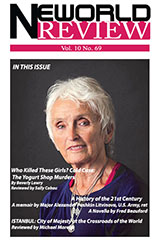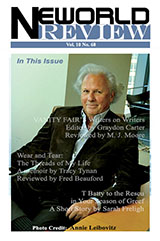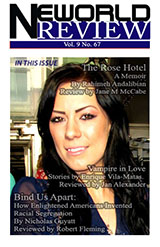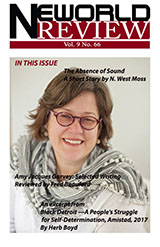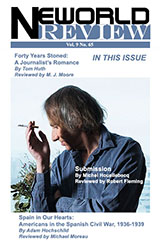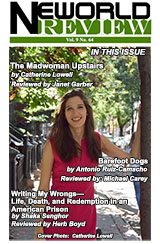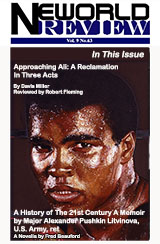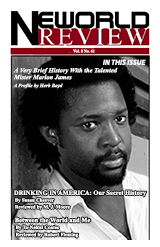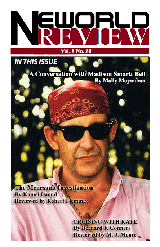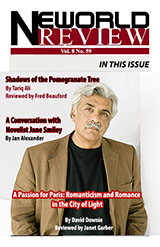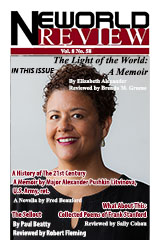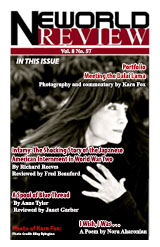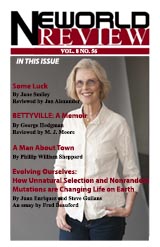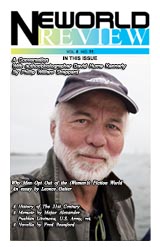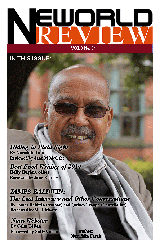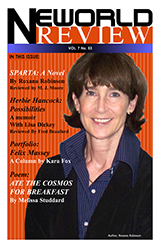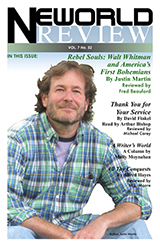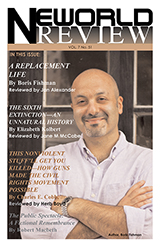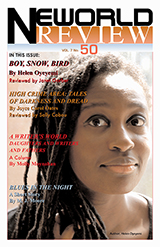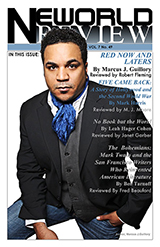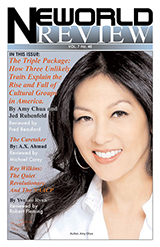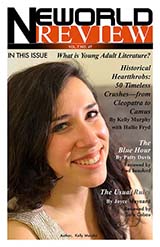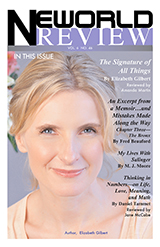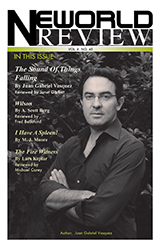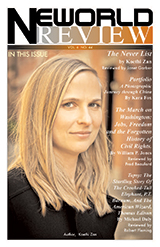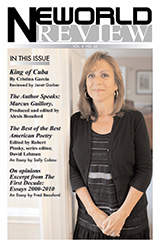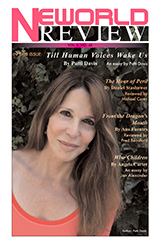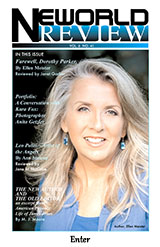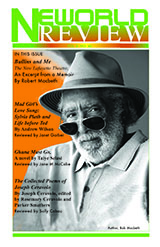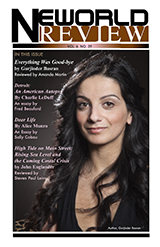Letter to the Reader:
A Small Meditation on America
Much has happened since I last wrote a letter to you. Then, as some of you will remember, I was living in Culver City, sandwiched between two large film studios, SONY and Culver Studios (the old MGM lot). Now, I am back on the East coast, walking the same New York streets that I have walked, for most of my life.
The long ride I made by train from California, as I have done dozens of times-- America, this solid land mass we call ours, started me once again thinking, who are we?
This time I stayed in coach and not in a private sleeper as I had done for most of this first decade. I was sleeping with strangers for three and a half days, once again. As always, we passed through deserts, mountain ranges, unending stretches of land that will soon be carefully tended to, and tiny, tiny one-light towns. As I sat in the large, observation car, I saw once again a large mosque standing in one of these small towns as the train sped by.
I couldn’t help but wonder who attended this house of worship in the middle of nowhere.
All kinds of four-legged creatures, wild as well as domestic, were everywhere. Also, my follow travelers, sleeping so close together, and trusting each other, and this huge machine, contained, as always, mainly white but also many blacks, both Amtrak workers and passengers.
Now, I also see a larger number of Asians and folks from India, and the ever-present Amish, Mennonites, retirees, tourists and would-be writers; who I could always spot taking out their little books and quickly jotting something down.
They weren’t fooling me.
Most of these people are the same people that folks that I have just left in the movie industry, and folks I will encounter once I get to the end of my journey, that are the other, unworthy of respect; flyovers, basket of deplorables, if you will.
But I have no fear of them, and I can sense that they have no fear of me
We finally came into New York’s Penn Station, the Amish and Mennonites long gone. I walked outside, after six years away. The horde of people everywhere, was outrageous, as I witnessed a rush of human bodies all around me, all rushing somewhere. Once again, I was home.
Enjoy this issue of The Neworld Review.
Fred Beauford
Editor-in-Chief
Publisher
At an out-of-control medical center in NYC, HR manager, Melie, pleads feverishly with buttock-groping doctors and their flaky staff to just get along. But then there's a little murder, a cancer, a handsome devil and his evil parrot, a knife-wielding cook. She's not quitting until she has it all sorted out —the hunk, the macaw, her life work—and neither will you!
This Month's Articles
LETTER TO THE EDITOR
The Kids of 1941
Dear Fred,
I just want you to know how much I like the fact that you feature people of all races and, even, more so, writers of all ages. It is good to see people of my generation still active and being highly creative.
We turned 75 this past year, three-quarters of a century, inching by and yet flipping past us like pages torn from a calendar. The U.S. decided to enter World War II the year we were born. Dad was holding me in Omaha on December 7, 1941, when he and Mother stood by the radio to hear that the Japanese had attacked Pearl Harbor. She probably got that little worry line between her eyebrows, knowing the United States could no longer remain neutral. Some of our fathers enlisted, and some were drafted. Some never came back. Dad was inducted in early 1945, when they were calling in men with deferments, those with children or older than the average draftee. He served until the war ended in August, 1945 and used the G.I. Bill to get his PhD and a VA loan to buy a house in Billings, Montana for his family that would eventually grow to eight daughters.
We learned to read with Dick, Jane, and Spot and were forced to study penmanship in school. We were herded into auditoriums to have all our immunizations at once. Our mothers tied the sashes of our carefully-ironed plaid dresses in big neat bows for school. The boys wore corduroy pants. In the afternoon after kindergarten our mothers listened to The Second Mrs. Malone on the radio, while they ironed dress shirts or pressed sheets in mangles. We played with coloring books, paper dolls, Tinker toys, Lincoln Logs, Erector Sets, and Tiddywinks on the carpet.
We saw Snow White and the Seven Dwarfs and Bambi at the movie theater. When television became available, we watched Howdy Doody, “yessiree, Bob.” We played Cowboys and Indians, Cops and Robbers, Kick the Can, and Tag with neighborhood kids in the summer twilight. We yelled “Geronimo” as we jumped out of swings. At school we were rounded up in two lines on the playground for Red Rover, Red Rover.
We ate Campbell’s tomato soup with grilled cheese sandwiches. Our milk was delivered in glass bottles on the doorstep, often in the snow, and the first oleomargarine had to be kneaded in a plastic tube to spread the yellow around. We ate enormous chunks of chilled watermelon or Popsicle halves in summer. We hopped over the revolving lawn sprinkler. We drank Nehi pop in glass bottles. We agonized over which penny candy to buy at the movie matinee, bought cereal for the prize inside, and collected box tops to send in for the Magic Decoder Ring. Some of our mothers gave us frizzy Toni permanents in August to prepare for the first day of school.
We said, “See you in the funny papers” and then, as teens, “See you later, alligator.” We learned manners and the fox trot. Our mothers made us send thank you notes. We addressed our friends’ parents as Mister or Missus, and boys stood up when a female entered the room. They opened doors for mothers, aunts, or dates and removed their hats indoors. Our parents might have given us a swat on the butt if we misbehaved. Usually, they just had to drill us with the look of death when we needed reprimanding. We learned hygiene and geography at school and were taught to be kind to others. We learned that it’s rude to stare.
Our parents were terrified of polio and may not have allowed us to go to pools, but we still learned to swim. We got the polio vaccine, when it came out in our teens. We listened....Read More
REVIEWING
Absolutely on Music: Conversations with Seiji Ozawa
By Haruki Murakami
Reviewed by Michael Moreau
Masterful Conversations
Two musical giants were at the top of their games when they came together in Carnegie Hall on that April evening of 1962. In some ways they were alike, yet, in important ways they were very different. Glenn Gould, a piano prodigy out of the north, already famous for his distinctive recordings of Bach’s Goldberg Variations, was 29 and in his prime—yet unbeknown to anyone in New York Philharmonic crowd he was near the end of his public performing career.
Leonard Bernstein, 43, was musical director and conductor of one of the world’s great orchestras and already famous for West Side Story and the televised Young People’s Concerts, with which he seduced neophytes like me into the world of classical music.
Both men lived and breathed music—both were considered eccentric in their own ways, flamboyant performers with distinctive interpretations of their respective repertoires—Gould leaning more toward the baroque, Bernstein a champion of the romantics and fierce advocate for Gustav Mahler.
On the night of April 6, they would collaborate (perhaps it would be more accurate to say they would appear on stage together) on Brahms’s D-Minor Concerto. The first half of the program consisted of two works by Carl Nielsen. After the intermission, the audience and orchestra took their seats something unprecedented happened. Bernstein appeared before Gould came to the stage and faced the audience from the podium to deliver…. What? An apology? A disclaimer, really, for the performance ahead, the Brahms. The maestro, before Gould sat down at the Steinway at center stage, stated that he had invited Gould to perform and that he so respected the younger man’s gifts that he “must take seriously anything he conceives in good faith,” yet he felt compelled to make clear to the audience that “discrepancies between our views are so great that I feel I must make this small disclaimer.” He went on to essentially say that the interpretation of Brahms was Gould’s alone and not his, not Bernstein’s, the conductor’s. The audience must have been stunned.
The longtime conductor of the Boston Symphony and other major orchestras, Seiji Ozawa, was then 28 and one of Bernstein’s three assistant conductors. Not long away from his native Japan he still struggled with English so he wasn’t certain what Bernstein had said until the buzz generated after the concert.
Why would a conductor both repudiate the interpretation and praise the talent of the soloist before conducting the piece? It’s a bit like a stage director coming to the apron before the curtain opens to announce that he has the highest respect for the leading actor, but that he disagrees with the actor’s interpretation of his character. Who’s in charge? It is, after all, the conductor who is responsible for the program.
Ozawa still ponders this a half century later in recorded conversations with the great Japanese novelist Haruki Murakami in the wonderful....Read More
REVIEWING
Bop Apocalypse: Jazz, Race, the Beats, & Drugs
By Martin Torgoff
Reviewed by M. J. Moore
’Round Midnight and Beyond
Long before Hip Hop, and decades prior to the emergence of Rock ‘n’ Roll, the combined elements of certain illegal drugs, popular controversial music, a youth culture and its rebellious subculture, duly inspired authoritarian laws and policies to do away with all that jazz.
And, it literally revolved around Jazz.
The music, that is. For the longest time, Jazz music was perceived by some parents and many preachers, as well as politicians and the police, as the red-hot soundtrack for a subterranean so-called “underground” youth culture, where all the races mixed, and all types of drugs fueled both the music and the miscegenation.
In Bop Apocalypse: Jazz, Race, the Beats, & Drugs, independent historian and cultural commentator Martin Torgoff has written a spellbinding, sweeping account of the myriad ways in which a great deal of America’s present was scripted ages ago.
Do you think that America’s new Attorney General, Jeff Sessions, is the first ever to make bold anti-marijuana pronouncements? Not at all. In Chapter Three of this gripping book, Torgoff details the career and the agendas of Harry Anslinger, who back in the 1920s and 1930s loomed large as a top gun with the Federal Bureau of Narcotics.
Dubbed “The Paranoid Spokesman” (and, Torgoff quotes judiciously and often from the brilliant essay “The Paranoid Style in American Politics” by historian Richard Hofstadter, to illuminate his main points) Harry Anslinger spearheaded an official, structured, mass-media-driven, anti-marijuana campaign as the 1930s unfolded.
That multifaceted campaign had everything to do with not just making outlaws of anyone who smoked weed. There was more than that at stake. To forbid by law any and all freedoms regarding marijuana, premarital sex (interracial sex in particular), and the devil-may-care hedonism associated with the Roaring Twenties and its failed Prohibition laws – that was the ultimate goal. Torgoff sums it up like this:
“Anslinger became convinced that the only way to ensure against any possibility of a recurrence of what had happened with Prohibition—the phenomenon of a significant percentage of the American population wantonly and brazenly breaking an unpopular law they found obnoxious, living as virtual criminals until the law had to be repealed—would be through a national campaign against the weed.”
And so, Harry Anslinger and his Federal Bureau of....Read More
NOVELLA
A History of The 21st Century
A Memoir By Major Alexander Pushkin Litvinova, U.S. Army, ret.
A Novella by Fred Beauford
Chapter 15
I can see you now, Father, dabbing your old, dark eyes, and saying, “good form, son! Well done, boy! You snapped out of it just in time, and allowed your ever-watching mother to once again guide you down the right path.
“And now you have your beautiful Russian bride, in the same way I found my beloved Shasa.”
But, please, Father, before you start getting carried away and start giving me high-fives or one of those other corny things you guys used to do in your century, there is a lot more to this story. A whole lot more. Lucy and I just didn’t ride off happily into the sunset like in one of those old movies from your century.
One thing is true, Lucy and I rarely spent a day not seeing each other from that first evening on. We had touched each other in a real way, and Lucy was not about to let me go; and, Father, I didn’t want to be let go.
I learned over our so-called Russian lessons that both she and Anna K Libid collected disability from the Manhattan Syndrome Fund, although, except for that crying spell at our first kiss, I still could not detect in either one of them even an appearance of that strange numbness of the spirit.
Maybe it was because Anna had only been in this country for so little time or because Lucy was so young, but neither of them seemed to have fully absorbed the enormity of what had happened. It was more than just the loss of a mother or a son or a father, although those were bad enough.
Each month they both received their little check from the Federal government, and Anna, because of her age, did not have to go see a witch doctor and only had to put up with the unpredictable visits from the caregivers.
The cynic inside of me said that they were getting those checks not because of any “syndrome” but because they were Russian. When I was growing up, both in Los Angeles and New York, that was always the rap on the Russians: no matter what the government program, they would find a way to get the most out of it. Their critics said it was a holdover from Communism.
This negative image of Russians as being opportunist lay-abouts so pissed off Mother that even when she could have asked for help, being a single mother and all, she refused.
“Who needs that. Let them keep it.” She once said with a haughty toss of her head. She had practically slammed the door in the face of a social worker that came to our door and told her that she could get food stamps.
Mother could afford to be contemptuous in those days, because she had her job at the bookstore, your little gifts of intellectual property, and, of course, the more than generous gifts from the ever-gracious gangster.
It soon became clear after only a few days of going to her apartment that Lucy wasn’t all of that interested in learning Russian. What she was interested in was my Army background and me.
“Did you fly when you were in the Army. I mean in a real airplane?” she asked eagerly on the second day, out of nowhere.
“Of course, how else could we get to where we were going? They were sending us all over the damn world.”
A wistful look came over her face. “What was it like? What was it like being so far up in the air? They won’t let us fly anymore. I just wish for once I could sit in an airplane and ride around in the clouds.”
Before I could say anything, she asked another question.
“Did you ever kill anybody? Were those ribbons grandmother mentioned because you killed a lot of people?”
I laughed. “Let’s put it like this. You see a cluster of personnel in the distance. You tell your loader and gunner to load an anti-personnel round. Then you blast the shit out of them. Did you kill them? Who knows?”
“Their dumb asses just ain’t around no more!” she said quickly. Lucy started laughing like crazy. I was really starting to like this woman, Father. I already told you how we vets like telling war stories.
“Tell me, did you ever get shot?”
“Damn right I was shot! Want to see the wounds?” I impulsively unbuttoned my shirt and showed her the scars from my wounds.
“Wow!” Her eyes widened as she reached over and gently touched my shoulder. “Wow!”
On the third day, she asked me a highly unusual question.
“Do you believe in the Manhattan Syndrome?”
Hummm. What could I say? I know that I saw all those crazed looking zombies walking all over the place. I was once one of them, just days ago, and still was in many ways. I still felt the pain and sense of absence. If it wasn’t the Manhattan Syndrome, then what was it? It was some kind of syndrome. Who cared what they called it?
“Sure. It’s just a name,” I said.
“But a name for what” Lucy answered back angrily. Once again, I saw that quick switch in her personality. “For thought control? So that the government could have an excuse to tell us what to do in whatever....Read More
PORTFOLIO
Portfolio: A Column by Kara Fox
EXPLOSIVE IMAGES
Ron Jaffe stands in the center of the storm, camera cradled in his hands, and he waits for that magic moment when it all explodes. With his profound eye for light and shadow and his understanding of the mechanics of the camera, he is ready for the perfect moment and then, CLICK. The magic is captured forever.
Taking pictures for more than thirty-four years in no less than 39 countries and islands, from the plains of Calgary to the southern tip of South America, through the deserts of North Africa, from Hollywood to a watering hole near Tamanrasset, and in the Algerian Sahara Desert, Ron has photographed fashion, glamour, local tribesman, corporate executives and four of our presidents.
This is a man with a deep passion for adventure. Leaving the peace of Alabama at 17, he was filled with a hunger to taste as much of life as possible. He spent years jumping out of airplanes (attached to parachutes of course), charging down snow-covered mountains on his skis, and now, having given up those stimulating activities, he spends his leisure time sailing the seas of the world.
From the world of political and corporate executive to that of television and film, Ron captures....Read More
REVIEWING
Becoming Leonardo: An Exploded View of the Life of Leonardo da Vinci
By Mike Lankford
Reviewed by Larry Baker
My Friend, Mike
Here’s what most people know about Leonardo da Vinci: He had some secret code that had been ignored by the Western World until Dan Brown uncovered it. I suspect that a lot of people have never even heard about the paintings of Mona Lisa and Jesus breaking bread for the last time with his merry pranksters, i.e. “The Last Supper,” but, they probably think that those were done by Michelangelo.
How do we determine da Vinci’s true fan base? Of course, we turn to Facebook, where two pages bearing his name have a total of 2,498,338 “followers.” Even if we deduct 98,338 of those followers as still being a bit blurry about the difference between da Vinci and Michelangelo...a reasonable guess...the Florentine artist has a respectable fan club of 2.4 million.
Me, I have three—my wife and two children. But that’s probably a lot more than Mike Lankford has right now. But, dammit, Mike, a long-time reclusive friend of mine, is about to become more famous than I, and Leonardo da Vinci is the reason.
A year ago, Mike sent me a manuscript of a new book he had written. Thing is, Mike and I have corresponded regularly for years, and the common thread is our writing. I thought I knew about everything he had been writing. That’s what writers talk about...themselves, their work. But, out of nowhere he asks if I would read his latest...about Leonardo da Vinci. Three hundred pages, as if immaculately conceived and dropped into the world, how do ya like my new baby?
Excuse me? Who? What? And, where did this come from? Me, I have always thought that Mike was a rare talent who was invisible on the publishing radar screen. I think he lives in a cave in Bend, Oregon. Who knows?
He published a brilliant memoir, Life in Double-Time, twenty years ago, about his life a white drummer in a black band on the road. And then,....Read More
REVIEWING
Who Can Afford to Improvise? James Baldwin and Black Music, the Lyric and the Listeners
By Ed Pavlic
Reviewed by Fred Beauford
“When it came to people, those in his work, and in his life,
he decided: ‘One tries to treat them as the miracles they
are, while trying to protect oneself from the disasters
they’ve become.”
Although this can often be a difficult book for those who do not have a solid, intellectual grounding in novelist/essayist James Baldwin’s literary works, it is, nevertheless, an excellent introduction for those who may have heard of him or have only read an essay or two.
Author Ed Pavlic, in Who Can Afford to Improvise? In this amazing, thorough meditation on his collective works lets Baldwin do most of the talking. The sense of music in Baldwin’s writing, implied in the subtitle, does not fully make the case and takes a decidedly backseat; still, this book is an often-brilliant effort to try to fuse these two different art forms into one.
Instead, however, it is a fascinating intellectual biography of the man, based on vast amounts of direct quotes from Baldwin’s many book reviews, novels, essays, open letters, plays and decades of being interviewed.
***
James Baldwin, growing up poor in black Harlem, never stepped foot in a college. He started his career with only a lowly diploma from Dewitt Clinton High School in the Bronx in the late ‘40s. His first efforts were book reviews for an expressive number of New York City literary and left wing political magazines. There, his talent as a masterful prose stylist with a deadly, wicked wit quickly became apparent.
Pavlic gives us this from a 1948 review in the New Leader of the novel, The Moth, by James M. Cain: “The only thing wrong with (Cain’s characters) was the fact that they were still reeling from the discovery that they were in possession of visible and functioning sexual organs. It was the impact of this discovery that so hopelessly and murderously disoriented them.”
By the time, we get to 1963, after his extraordinary essay, The Fire Next Time, was published the year before in The New Yorker, James Baldwin was arguably the most celebrated writer in America, even making the cover of Time magazine.
Here, author Pavlic use a quote from one of Baldwin’s friends, the composer and jazz pianist Alonzo Levister, “When FIRE came out in The New Yorker I was at Horatio Street. He was an overnight star, and I took him to an upscale store, British American House, for him to buy what I think were the first nice clothes he ever had ‘til that time. That’s how I remember it.”
As the Civil Rights Movement accelerated, and the “Long Hot Summer” of costly black race riots that still haunt black communities today, nationwide; and the political assassinations of the Kennedys, Malcolm X, and Dr. King; and people of every walk of life starting to come out in the streets in cities and college campuses, all....Read More
REVIEWING
Are You Smart Enough? How Colleges’ Obsession with Smartness Shortchanges Students
By Alexander W. Astin
Reviewed by Jane M McCabe
Many books are published yearly that never grace the aisles of Barnes & Nobles nor the few remaining privately-owned bookstores, like Vroman’s in Pasadena,Ca. where I like to peruse the aisles to see what’s been published recently. If deemed particularly worthy, you may find an advertisement for some in the New York Review of Books, where University presses publish ads, but most of these books languish without receiving much of a readership. Among them are numerous publications penned by university faculty members. (I don’t know if the “publish or perish” rule still applies, but I do know that a professor raises his or her profile by publishing.)
One such book is Are You Smart Enough? by Alexander W. Astin, professor emeritus at the University of California, Los Angeles (UCLA) and founding director of UCLA’s Higher Education Research Institute. Professor Astin is a frequently-cited author in the field of higher education.
In Are You Smart Enough? Professor Astin calls attention an injustice in United States colleges’ system of admitting students. They are admitted almost solely based on their SAT (Scholastic Aptitude Tests) scores. The top ten colleges in the country—Harvard, Yale, Princeton, Massachusetts Institute of Technology (MIT), Stanford, UC Berkeley, Brown, Cornell, Dartmouth, Columbia, and Chicago—admit students based almost entirely on their SAT scores. This is practice which has been going on for some time.
Indeed, an entire industry has grown to help student improve their scores, for a cost, of course.
At first glance this might not seem like an injustice at all—why not admit students based on their scores? But, upon a closer look, we find that doing so slants admission in favor of the smart white students who excel in taking these kinds of tests.
“The pecking order of America’s 4,000-plus colleges and universities can be visualized by imagining a pyramid-shaped hierarchy with only a few dozen elite institutions occupying the peak. [Harvard, Princeton, Yale, Chicago University, NYU, Barnard, etc.] As you drop down lower in the hierarchy, the pyramid keeps getting wider until you reach the base, which is very wide and contains mostly community colleges.”
As we all know, it’s quite prestigious to gain admission into Harvard or Yale or Princeton. If you do, you will be considered to be very smart by your family and peers. If you don’t score well on the SAT exams, you will be deemed only worthy of a lesser college or consigned to taking courses part-time at your local community college.
By the time they graduate from high school, most students will have made the assumption that they just aren’t smart enough to study at the Ivy Leagues. And, we all know, don’t we the power one’s estimation of oneself plays in one’s achievements.
Other attributes are summarily ignored—like being handy, creative, musical, sensible, well....Read More
ESSAY
The Closing of the Liberal Mind: How Groupthink and Intolerance Define the Left
By Kim R. Holmes
<An Essay by Fred Beauford
I decided to make this a personal essay and not a book review because so much of my recent history has been told in The Closing of the Liberal Mind. In 1990 I was the editor of the Crisis magazine, the official publication of the National NAACP. I was also dating a woman who, as it turned out, was the Chair of the American Studies Department at SUNY/Old Westbury.
One evening, as we sat upright together in her bed, she white, me black, both as naked as jaybirds, she turned to me and said, “You would do just fine.”
Hmmm. What did that mean?
What it meant was that she wanted me to teach in her department. I was later to learn the main reason why she was so eager to have me. Her college was an Affirmative Action school set up by the State University of New York (SUNY) system. The State University of New York was established in 1948 by Governor Thomas E. Dewey.
The system was greatly expanded during the administration of Governor Nelson A. Rockefeller. This was also the fable 60s, an age of black protest of not being allowed to participate in all the economic opportunities our country was offering—to everyone but them.
Governor Rockefeller came under great political pressure to make sure that blacks were included in his grand plan to vastly expand SUNY (The plan was a smashing success, by the way. SUNY is still the largest state-run university system in the country. And, they have accomplished this without a football or basketball team anywhere in the system of any note.)
The result was SUNY/Old Westbury, which was supposed to be one third black, one third Hispanic and one third white; that was meant solely for students only, not faculty.
There had never been a black male professor in my former girlfriend’s department, even though the President of the college was a black woman at the time, and she was chair of the American Studies Department. I was to learn that the black students on campus had had enough and demanded that the college hire a black man.
So, good luck was lurking everywhere for....Read More
Neworld Review
Vol. 10 No 70 - 2017
Editor-in-Chief
/Publisher
Fred Beauford
Online Managing Editor
Richard D. O'Brien
Associate Editor
Jane M. McCabe
Fiction Editor
Jan Alexander
Poetry Editor
Sally Cobau
Senior Editors
Molly Moynahan
Herb Boyd
M.J. Moore
Janet Garber
Director of Photography
Kara Fox
President
Alexis Beauford
Contributing Writers
Michael Carey
Robert Fleming
Kara Fox: Portfolio
Emily Rosen
Jane Smiley
Michael Moreau
Larry Baker
Robert Fleming
Michael J. Moore
The Neworld Review is a publication of Fred Beauford, 3183 Wilshire Blvd,
Suite 196,
Los Angeles, CA. 90010.
Material in this publication may not be reproduced in whole or in part without permission. Opinions expressed by contributors do not necessarily reflect the views of the publishers.
Manuscripts should be accompanied by a self-stamped envelope. Online submissions are accepted at [email protected].
Neworld Review cannot be held responsible for unsolicited photographs or manuscripts.
All correspondence to:
Fred Beauford
Editor-in Chief/Publisher
Neworld Review
3183 Wilshire Blvd,
Suite 196,
Los Angeles, CA. 90010
Archived Issues
